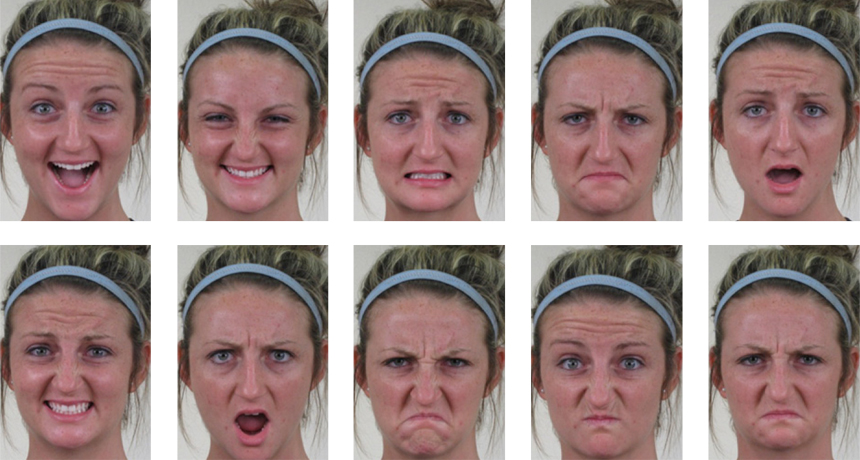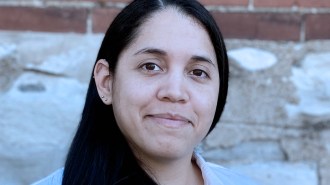Twenty-two emotions are written on our faces
People’s features express more feelings than scientists thought

MAKING FACES Human faces are more expressive than scientists gave them credit for. By mixing and matching the six classically recognized facial expressions (happiness, surprise, sadness, anger, fear and disgust), scientists have opened up a new category of expressions for compound emotions, such as “happily surprised” (top left) and “angrily disgusted” (bottom middle).
S. Du et al/PNAS 2014







